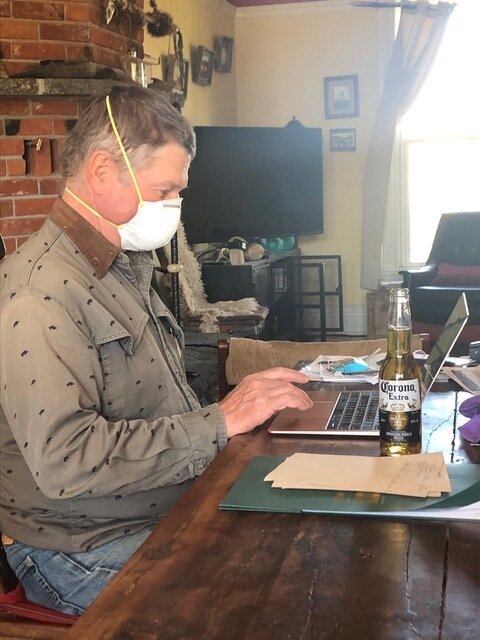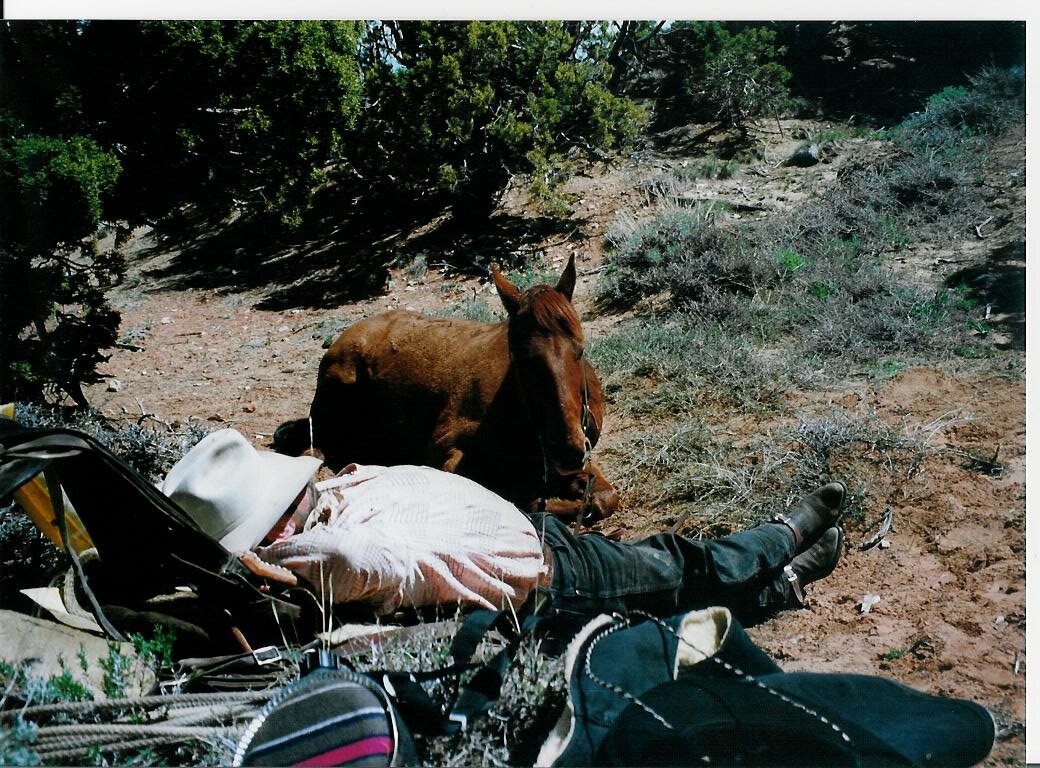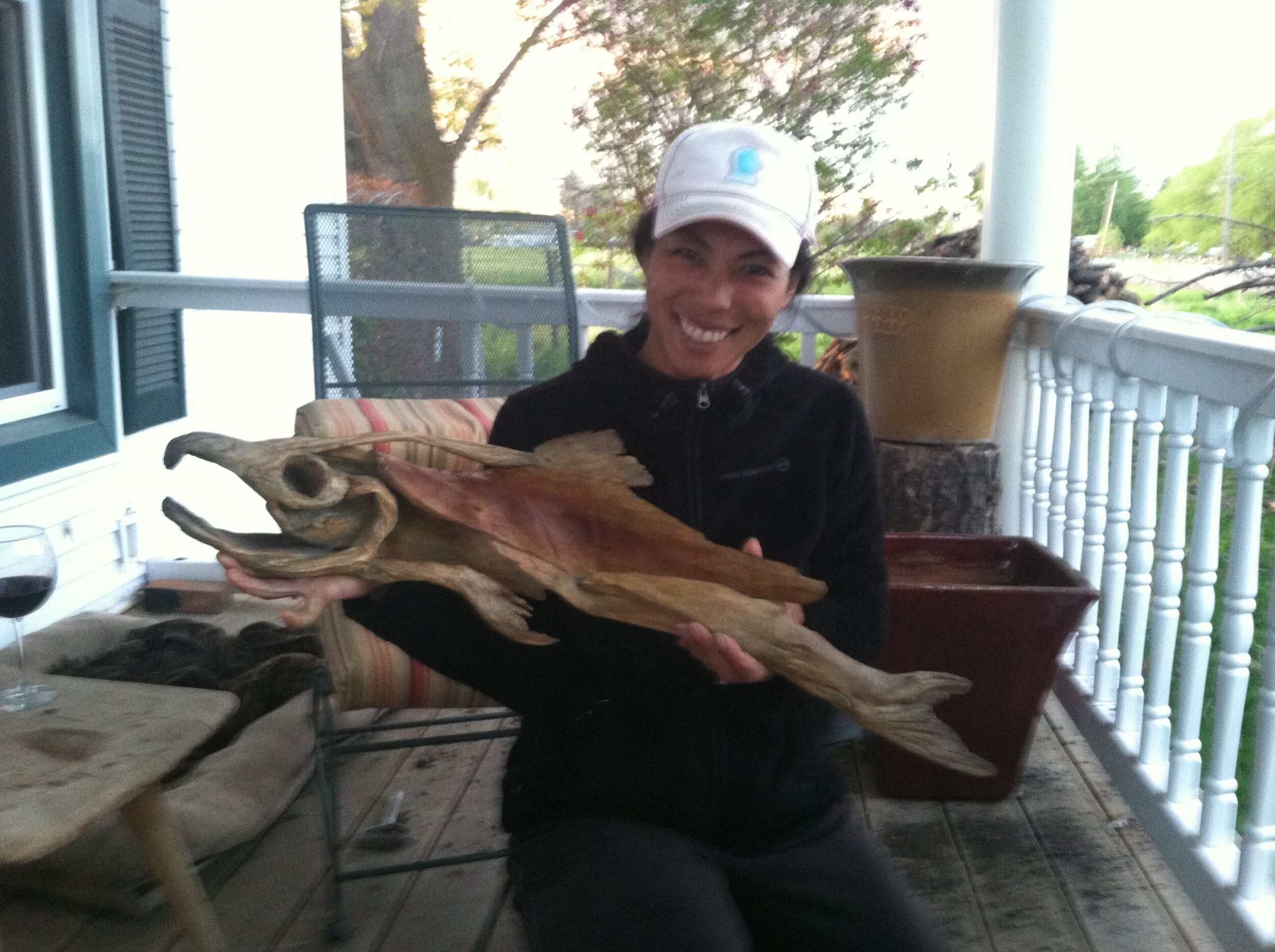Corona Days: Making Threats Beneficial
What is a threat? We feel like we have something at risk. We feel like we are losing or have lost control. We can identify whether the threat comes from our financial realm, like a cattle market bust, a liquidity crisis, or maybe insolvency and bankruptcy. The threat might be ecological in nature, like a drought, a flood, an endangered species, or even climate change. Or maybe it’s social, like a misunderstanding, a divorce, or a lawsuit. I have been threatened by all of these at different times in my life.
What happens when we feel threatened? People tend to take one of two courses, and most of us begin with a reaction, blame others, and hang on to traditions and superstitions. Our eyes glass over, our neck bows, and we defend whatever we have been doing. Because if we acknowledge that we are exposed to a threat, we acknowledge that we have lost control.
The Illusion of Control
Those of us dealing in the complex world of economics, ecosystems, and society know that complexity self-organizes, and we are never in control. At best, we can influence the self-organizing process. And we have learned that we want to influence that process towards more diversity and more complexity, where we will find more resiliency and a regenerative world.
Hopefully, we get through the reactionary phase and enter the second course and collect data and gather information. Information and data help us better understand the threat and can empower decisions at the soil surface.
Threats Paralyze
We bought a ranch in 1978, a year before the cattle market and ranch land market broke, ushering in the farm crisis. I was terrified and paralyzed. I couldn’t see a way out and worked as a carpenter, a roughneck, and a barite mill in Nevada. This space allowed me to reorient and understand some things. I studied cattle markets and land markets, which tend to double in value, then break back by a third. I studied financial ratios to track liquidity and solvency, repayment capacity, financial efficiency, and sensitivity.
Understanding these principles explained why I was threatened. If we have a debt to asset ratio higher than 65%, a one-third break in land values could wipe out our solvency, let alone the 50% decline ranch values took in the 1980’s. Or a current ratio of less than 1.3 will eliminate our liquidity when the cattle market bust takes one-third off the top, which it will do regularly.
Honor the paralysis because it brings space that we need to see the cracks in our foundation. Think of a threat as a stress test, which will expose weakness in our business, our character, and our land health.
Threats Reset
The paralysis removes our need to be right and considers that everything we knew was wrong. But not really, it’s only wrong because times have changed. What was right in one context can be wrong when the context changes.
Think of a grass plant, up on a hillside just stretching and growing into the sun, and a cow comes along, wraps her tongue around her and chomps. The plant immediately goes into recovery mode, pushing down roots, mobilizing carbohydrates, and sending leaves up to capture the sun. If the cow comes back and gets another bite, the plant will really be stressed. And if it comes back for a third bite, the poor gal will most likely die.
But if the herder moves the cattle after that first bite, the grass plant will recover and gain strength. With the tool of rest, the plant gets space to rebuild, grow, and recover. Paralysis brings rest, not to be a couch potato but to rebuild, grow, and recover. Think of the space as a time to reset our understanding of our context. Think of this as an opportunity to restart our mission.
Threats Bring Perspective
Paralysis, a reset, and restart allow us to see what we always thought to be true, differently. After looking at the nature of markets, I went to a Bud Williams marketing seminar. With my cleared brain, his perspective was brilliant. We don’t have to buy low and sell high to make money with our livestock. He explained that we are merely trading inventory. We sell an animal that will not add value and use that money to buy an animal that will add value. We are simply downloading animals that can best utilize the inventory of feed we have available. We learn that we buy our profit and make money on our grass, whether we are in an up market or a down market.
Getting a benefit from a threat takes a shift in perspective and focusing on what we are doing.
Threats Distract
It is tough to focus when we are threatened. Threats will immediately distract us from what we want and we zero in on the problem. One of Holistic Management’s core premises, “Focus on the goal and not the problem, or the problem will become the goal.” Weeds are a good example. They distract us from the goal of moving toward a perennial grass, forb, and shrub community and we view the world through a spray nozzle. A recession causes us to hoard cash and cut wealth generating investment, like education, developing skill sets, and building wealth in our soil and people. Coronavirus distracts us from growing healthy food, building robust immune systems, and supporting the workers that grind away at the soil surface, keeping our country fed, clothed, and functioning.
When we get distracted by the urgent, we aren’t working on the important. If we stay grounded in our Holistic Context, we think about, we plan, and we act on the important. Practicing Holistic Management will shift our time from chasing the urgent to nurturing the important.
Threats Divide, Divide, and Divide
Economic threats can divide decision makers and those in our resource base. A small argument, or a second guess, on how a heating bill got so high, on what bull to purchase, or the expense of a weekend getaway can divide a team. Threats expose the cynics that know the cost of everything and the value of nothing. Financial Planning and good records can keep this from happening. The National Cattlemen’s Association’s Standard Performance Analysis directed me to collect financial ratios and my brother taught me how to do a variable sensitivity analysis. Records, financial ratios, and planning preempt unproductive arguments and division.
Oddly, division escalates as a business succeeds. Sure, there might be a little bickering and division when we start up a business, but the real division and power struggles seem to happen as a business grows. Insecurity and lack of character have a hard time with success and imagine threats.
We can’t manage what we don’t measure. Check into financial ratios and manage what matters.
Ecological threats can divide land managers and special interests. I often hear ranchers cussing the enviro’s because of endangered species threats, and I was one of them. After thinking about the potential consequences, I decided ignorance would not be a very good defense before a judge on a “take” charge under the Endangered Species Act. We invited the Wyoming biodiversity database to look at our ranch and identify endangered plants. George Jones found four endangered plants that grew on steep, talus slopes where cattle would most likely not graze. During his visit, he taught me about many other plants, including willows and how different species are indicators of grazing practices and elevation.
This softening of my resistance to the threat of an endangered species prompted us to work with the University of Wyoming to study the threatened sagegrouse. It turns out the threat to the sagegrouse targeted early brood-rearing habitat. For ten days after a sagegrouse chick hatches, they need a high protein diet. In Wyoming’s sagebrush steppe, that consisted of insects and forbs. Implementation of Holistic Planned Grazing addresses both of these factors by minimizing overgrazing and the need for insecticide use, which helps the sagegrouse chicks biological weak-link.
Our neighbor and artist Brenna Tyler holding her creation, “River Dancer.”
In Oregon, we have Spring Chinook salmon, who need hot-season water, complex river systems, with a riffle > run > pool > glide structure. Basically, reconnecting the river to the floodplain, which will serve cattle very well. Endangered species simply need habitat, and that habitat will benefit the stability of the system where cattle graze.
We can’t manage what we don’t measure. Check out the most robust means of ecological monitoring yet, at Ecological Outcome Verification (EOV), and manage what matters.
The Threat of All Threats
Social threats can be more divisive than all of the above. The organizations that tout triple bottom line management should be ashamed at their incompetence and malpractice in failing to come up with a means to plan, monitor, and build on our well-being. That may sound a bit harsh but bear with me.
Recognizing this gap, Andrea Malmberg built on her training and career in Practicing Holistic Management and Natural Resource Sociology, by getting a MA in Positive Psychology at the University of Pennsylvania. With her knowledge and skill, she developed LifeEnergy.Guide, which can guide us in planning and monitoring our individual emotional well-being. If we fail to tend our emotional health, it will lead to weak links and disruption in our family, business, and community.
Financial management has been around for a long time, and people are pretty comfortable discussing and implementing financial principles and ratios. Ecological principles? Not so much. Holistic Management gave me a vocabulary and a thought process that built bridges rather than divides, but many land managers are not fluid in these concepts. Social well-being remains elusive at best, and totally off the radar, at worst.
The sad irony is that financial and ecological threats are rooted in social dysfunction. The key to triple bottom line management means planning and monitoring for social function. Tending to our personal emotional well-being provides clues in how we must behave to realize our Future Resource Base. Find out what matters in your social context by taking an inquiry at LifeEnergy.Guide and manage what matters.
Making Threats Beneficial
Threats, like the Coronavirus, expose fractures in our structure. These fractures develop as times change and complexity self-organizes. Threats disrupt, paralyze, reset, bring perspective, distract, divide, divide, and divide. Threats are a message that we are out of touch. Threats prompt us to seek information. Threats can be beneficial, but it takes a conscious effort to hear and learn the message a threat brings. And then, respond with changed behavior.
Threats taught me how markets function, how to be curious and follow information, how to live with and appreciate endangered species, how to recognize the difference between intelligence and character, how to minimize overgrazing, and how to let rivers become rivers.
A threat is a terrible thing to waste. The coronavirus has exposed cracks in how we grow, harvest, process, and distribute food. We can do better. The Coronavirus has exposed flaws in how we treat the sick but, more importantly, how we manage for health. We can do better. The coronavirus has exposed problems with income and wealth distribution. Essential services and frontline workers should not be associated with poverty. We can do better.
We can learn from this threat, as we have other threats. Beneficial threats can empower the decision makers at the soil surface.
See the Jefferson Center Savory Institute Hub for a webinar on Beneficial Threats




